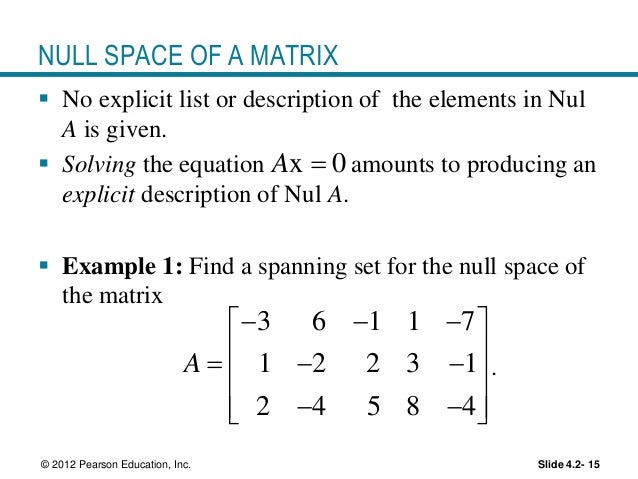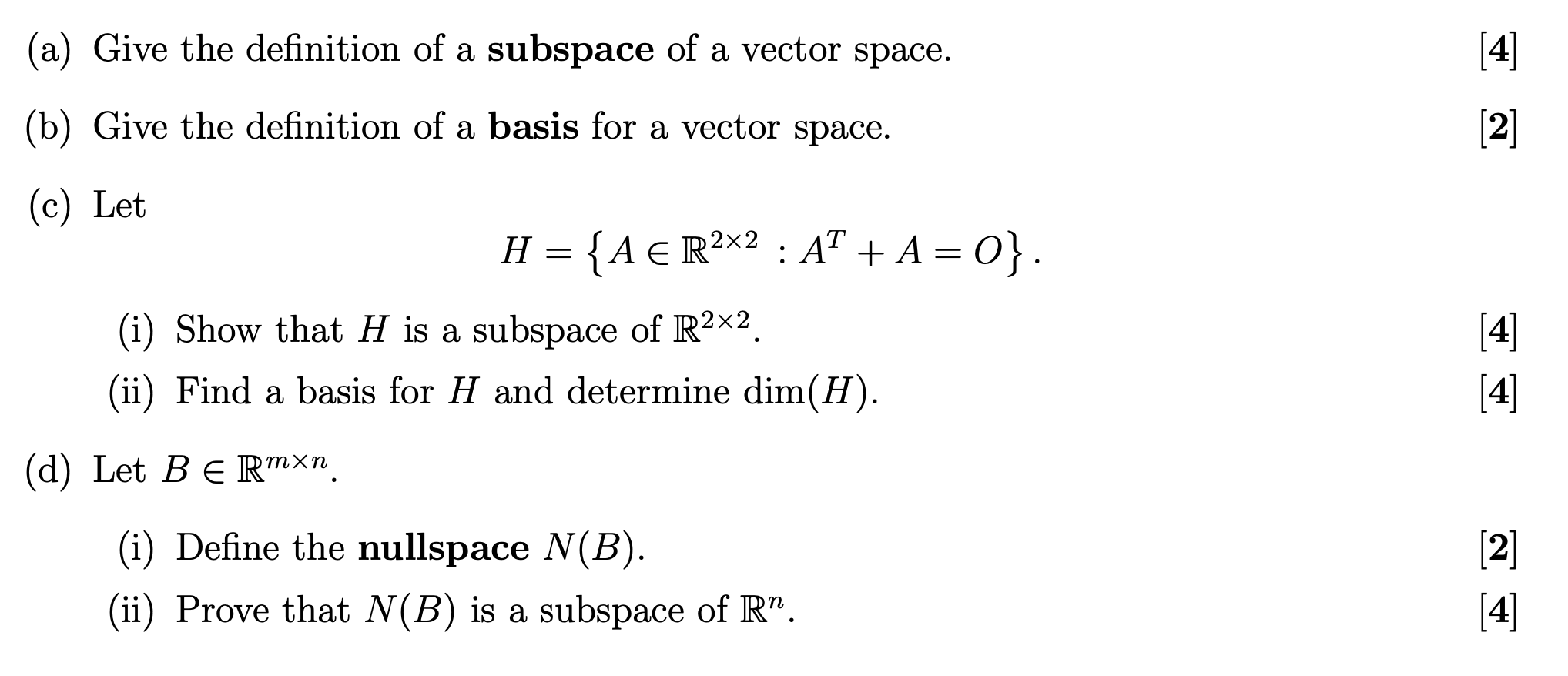

If we multiply any vector in \(U\) by any constant, do we end up with a vector in \(U\)?.W V which contains the zero vector of V and is closed under the operations of. If we add any two vectors in \(U\), do we end up with a vector in \(U\)? Definition 2.5 Given a vector space V over F, a subspace of V is a subset.That is, if we have some set \(U\) of vectors that come from some bigger vector space \(V\), to check if \(U\) itself forms a smaller vector space we need check only two things: We can use this theorem to check if a set is a vector space. Note that the requirements of the subspace theorem are often referred to as "closure''. All of the other eight properties is true in \(U\) because it is true in \(V\). A subset of a vector space is a subspace if it is non-empty and, using the restriction to the subset of the sum and scalar product operations.

We know that the additive closure and multiplicative closure properties are satisfied. That is, we need to show that the ten properties of vector spaces are satisfied. Remember that it is conventional to assign the degree to the polynomial, so we have, and everything makes sense.\( \newcommand\) in \(U\) and all constants \(\mu, \nu\), then \(U\) is a vector space. Using the conventional polynomial sum and product by elements of, it is easy to check that this is a vector subspace. Ĭonsider the set of polynomials in with degree smaller or equal to : This proves that, and therefore that is a vector subspace of. This set is nonempty, and using the properties of the transposition we have that, given and : Then is the set of symmetric matrices of. Where is the set of by matrices with entries in, and denotes the transpose of the matrix, that is, the matrix obtained changing rows by columns.

We may think of as the vector space inside. Similarly, if we multiply by any scalar a vector with a zero third component, we get a vector with a zero third component. Indeed, if we add two elements of with a zero third component, we obtain also an element with a zero third component. It must be closed under addition: if v1S v 1 S and v2S v 2 S for any v1,v2 v 1, v 2, then it must be. However, if we think of as a vector space over, is not a vector subspace, since it is not closed under scalar multiplication. Subspaces It must contain the zero-vector. If we think of as a -vector space, then is a vector subspace.The set consisting of the zero vector only is also a (trivial) vector subspace. Then is itself a (trivial) vector subspace. Also if we set, then for all and, , proving that is also closed under scalar multiplication. Conversely, if the condition holds, set, and then given we have that. If is a vector subspace, the condition clearly holds by definition.

Then is a vector subspace if and only if for all and all, we have that. Proposition Let be a -vector space and let be a nonempty subset. The following proposition gives an easy characterization of vector subspaces. A non-empty subset U of V is said to be a subspace of V if u + v U and cu U for all. That is to say, a vector subspace of is nothing but a subset of that is also a vector space, under the same vector addition and scalar multiplication. A nonempty subset is said to be a vector subspace of if it is closed under the vector sum (that is, whenever we have ) and under the scalar multiplication (that is, whenever and we have. Throughout this and the incoming lessons, will always denote a field.ĭefinition Let be a -vector space. To do so, we need the following definition.
#Subspace definition vector how to#
In this lesson we are going to see how to build vector spaces from previously-known ones.


 0 kommentar(er)
0 kommentar(er)
